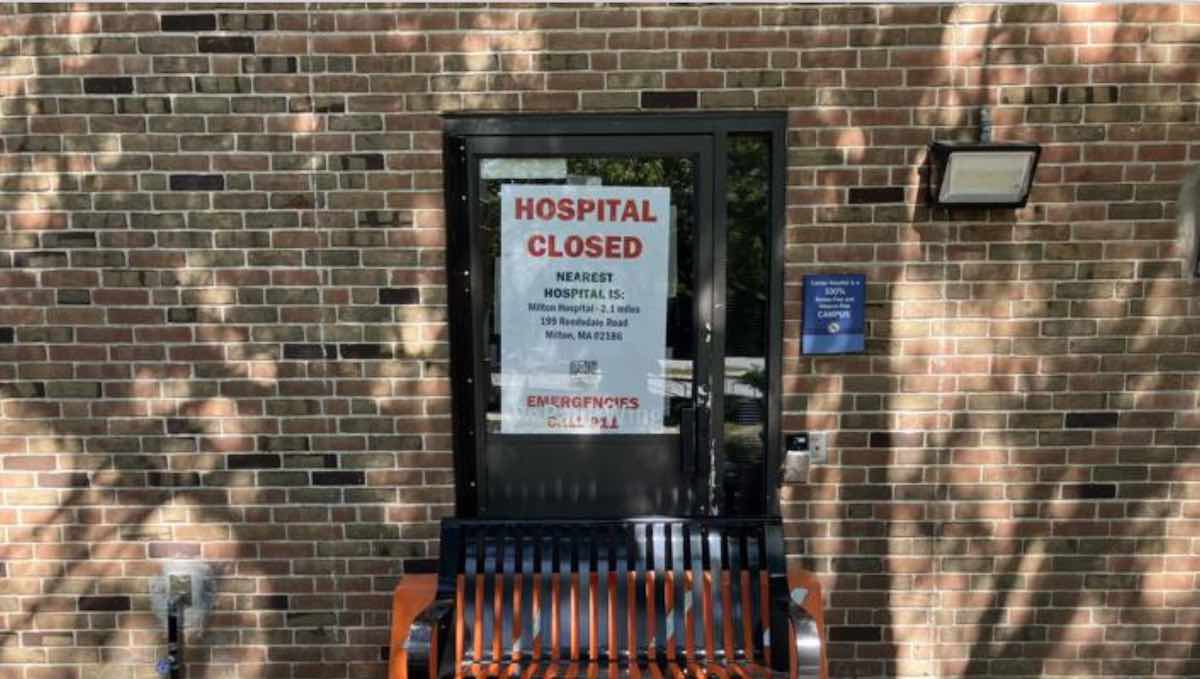Economy
Report Shines Light On “Troubling Trend” At Massachusetts Hospitals

While the problems at Steward Health Care absorbed the spotlight over the past nine months, many other hospitals across Massachusetts continued to struggle financially in what an industry group called a “deeply troubling” trend.
New financial data released by a state agency found that more than half of acute care hospitals in Massachusetts experienced negative operating margins through a significant portion of the fiscal year ending June 30.
Only 25 out of 58 hospitals reported positive operating margins during that span, and the statewide median operating margin fell to 1.1 points to -0.9 percent, the Center for Health Information and Analysis said in a new report.
Even if you remove the bankrupt Steward hospitals — which after the data period ended either closed or were acquired by new owners — from that count, more than four out of 10 remaining hospitals were still in the red.
“Once again, CHIA’s quarterly report is deeply troubling evidence of Massachusetts hospitals’ financial challenges. With more than half of our hospitals operating in the negative and two-thirds of our hospital health systems consistently losing money on their operations, there is a very real threat to the sustainability of care that patients deserve,” said Daniel McHale, a senior vice president for health care finance and policy at the Mass. Health and Hospital Association. “It is critical to recognize the immense — and growing — cost pressures hospitals are incurring to keep services accessible for everyone who needs them.”
The report comes as Massachusetts families and employers for years continue to struggle with the burden of rising health care costs. The average annual family premium grew from $16,400 in 2012 to $23,100 in 2021, and regulators have been warning in recent months that cost trends are headed in the wrong direction. Total health care spending in Massachusetts rose to $67.9 billion in 2021, or about $9,715 per person, according to CHIA.
Industry leaders view operating margins as the best measure of hospital financial health because total margin also includes other factors like investment income, contributions and asset sales that do not directly impact day-to-day care.
It’s not the first time that the median operating margin has landed in the red. CHIA also reported statewide median operating margins below 0 percent through the same period of time in 2020 and 2022.
The report covered three quarters of data for many hospitals, most of whom typically begin their fiscal years on Oct. 1, and two quarters of data for Steward and Tenet hospitals, who count fiscal years differently.
At the time captured in the latest report, Steward was early in bankruptcy proceedings for all of its Massachusetts hospitals and had not yet announced it would shutter Nashoba Valley Medical Center in Ayer and Carney Hospital in Dorchester.
The CHIA data through June 30 showed Steward’s hospitals all in the red, with operating margins ranging from -0.2 percent at Saint Anne’s Hospital in Fall River, which has since been acquired by Lifespan, to -38.2 percent at Carney, which is closed. (The worst outlook was at Norwood Hospital, which has been closed since 2020 due to a flood and ran a -111 percent operating margin through June 30.)
Over the six-month span through June, Steward’s hospitals collectively reported their expenses outpacing revenues by $117.4 million.
But financial pressures were not limited only to the for-profit system that has been lambasted on both Beacon Hill and Capitol Hill.
Several non-Steward facilities ranked among the bottom 10 in operating margin, including Anna Jaques in Newburyport (-25.3 percent operating margin) and MetroWest Medical Center in Framingham (-11 percent).
Some facilities fared better. Baystate Medical Center in Springfield ran a 12 percent operating margin through June 30, the only facility to hit double digits by that measure.
The data show some variation, but for years, academic medical centers have performed the best. Over the past four-plus years, the median margin in that group has never dipped into the negative, ranging between a low of 0.2 percent and a high of 3.9 percent, CHIA data show. Those facilities tend to attract more patients on commercial insurance, which often pays more than government-funded coverage.
All four other hospital types — teaching hospitals, community hospitals, community hospitals with a high share of public payers, and hospital health systems — have had at least one median operating margin in the red in that span.
The House and Senate this year approved a range of hospital oversight and financial reporting reforms, inspired both by the Steward Health Care crisis and broader industry pressure points. However, top House and Senate Democrats haven’t been able to agree on a single approach and the legislation has been in limbo for more than two months since formal sessions ended for the term on July 31.





